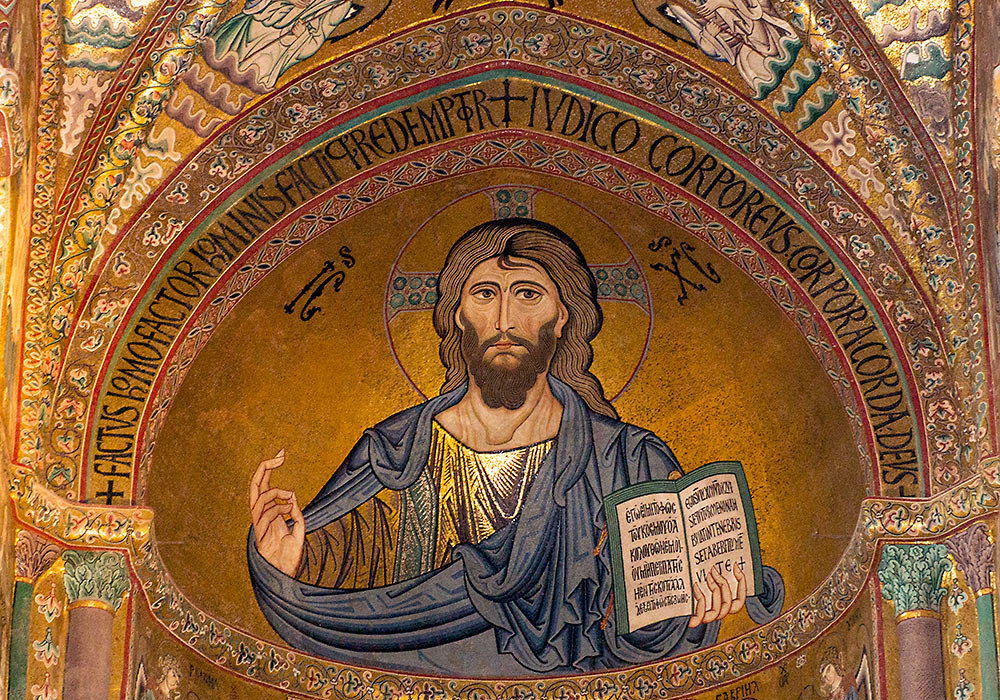my source: Crossroads Initiative
This article, “Ressourcement theology, aggiornamento, and the hermeneutics of tradition” by Marcellino D’Ambrosio is reprinted from Communio 18 (Winter 1991). The theological movement the set the stage for the Second Vatican Council shows that the Christian tradition is a vital and dynamic force that is not retrograde, but progressive. If you would like to open the footnotes for this article in a separate window so you can more easily look at them as you read the text, you can find them here.
The years 1930-1950 marked a time of crisis and change affecting every aspect of European society.{1} During this tumultuous period of transition, a broad intellectual and spiritual movement arose within the European Catholic community in response to the challenge presented by a newly secularized society, a challenge that the reigning neo-Scholasticism seemed sorely ill-equipped to meet. Though this movement drew some of its inspiration from earlier theologians and philosophers such as Möhler, Newman, Gardeil, Rousselot, and Blondel, it also owed a great deal to the French Catholic poets Charles Péguy and Paul Claudel.{2}
I. A SINGULAR EPOCH IN FRENCH THEOLOGY
Academic theologians involved in this movement included such Belgian and German thinkers as Emile Mersch, Dom Odo Casel, Romano Guardini, Karl Adam, and Dom Anselm Stolz, to name a few. Yet it was France that was the undisputed center of theological activity during this fertile epoch{3} and so it will be to French theology during this period that we will limit our attention here. Led principally by the Jesuits of the Lyons province and the Dominicans of Le Saulchoir, the French theological revival of these years boasted some of the greatest names in twentieth-century Catholic scholarship such as Henri de Lubac, Jean Daniélou, Hans Urs von Balthasar, Yves Congar, Marie-Dominique Chenu, and Louis Bouyer.{4}
The participants in this movement, derisively labeled “la nouvelle théologie” by its opponents,{5} were far from the tightly organized cadre they were often thought to be.{6} On the contrary, they were men from various universities and religious congregations who, though friends and colleagues,{7} nevertheless differed in many respects.{8} What united this diverse group were the convictions that 1) theology had to speak to the Church’s present situation and that 2) the key to theology’s relevance to the present lay in the creative recovery of its past. In other, words, they all saw clearly that the first step to what later came to be known as aggiornamento had to be ressourcementóa rediscovery of the riches of the Church’s two-thousand-year treasury, a return to the very headwaters of the Christian tradition.{9}
For these thinkers, doing theology meant doing history. Yet the distinctive approach to historical theology which they shared was neither mere detached, scholarly reconstruction nor a futile attempt at what Congar calls “repristination.”{10} It was rather a creative hermeneutical exercise in which the “sources” of Christian faith were “reinterrogated”{11} with new questions, the burning questions of a century in travail. With such twentieth-century questions serving as hermeneutical keys, these theologians of ressourcement were able to unlock new rooms in the treasure house of tradition and discover there, surprisingly enough, many of the twentieth-century ideas which neo-Scholasticism neglected or even resisted.{12}
In this essay, I will take a close look at the French theological revival of 1930-1950 with an eye towards 1) capturing the theological ethos of this pivotal epoch which had such enormous impact on the Second Vatican Council and 2) inquiring into what relevance it may have for theology today. I hope to establish that the twin impulses of ressourcement and aggiornamento, which are sometimes erroneously set over and against one another, are, at least in the authors under discussion, inextricably intertwined.
II. THEOLOGICAL DISCONTENT
In 1943, a book appeared which broke like a bombshell upon the French Church. Written by Henri Godin, a priest who had been intimately involved with the Young Christian Workers movement (J.O.C.) in France for many years, France, pays de mission?{13} exposed the tremendous religious indifference that existed in France and the Church’s loss of large segments of the working class. Yves Congar saw the publication of this book as nothing short of a historical event: “The man and the book were truly providential and prophetic. . . . Very quickly, this work led to a new awareness of the situation of the world and of the relation of the Church to this world.”{14}
Suddenly, it seemed, the whole French Church became aware of the magnitude of France’s dechristianization and scrambled to do something about it. Incarnation, présence, engagement, and adaptation became the new pastoral buzzwords. A call to missionary activity resounded throughout the Church and gave rise to bold new pastoral initiatives such as the worker-priests. The exciting revival of Catholic life and pastoral practice sparked by Godin’s book seemed to peak in the years immediately following the war. Yves Congar remarks that “anyone who did not live through the years 1946 and 1947 in the history of French Catholicism has missed one of the finest moments in the life of the Church.”{15}
In a provocative article written in 1946, Jean Daniélou, a Lyons Jesuit who taught at l’Institut Catholique of Paris, set out to describe the kind of theology necessary to meet the challenges of the post-war situation.{16} In the course of the article, regarded by some as a sort of “manifesto” of “la nouvelle théologie,” Daniélou indicts theology for being absent from, not present to, the thought world of his day. Indeed, he asserts, Scholasticism is “a stranger to these [contemporary] categories . . . mired” as it is “in the immobile world of Greek thought.” Though history is a central category for every philosophy from Hegel to Bergson, notes Daniélou, neo-Scholasticism has virtually no historical sense. In an existentialist world, it remains resolutely essentialist and objectivist, oblivious to human subjectivity. In fact this theology, he charges, is cut off not only from the contemporary thought world, but from the daily life of the people of God. Hardened in its Scholastic categories, neo-Thomism remains basically incomprehensible to most people and is thus incapable of offering them spiritual and doctrinal nourishment.{17}
Such a “rupture between theology and life,” maintains Daniélou, flies in the face of one of the chief insights of the century, i.e., that thought is not meant merely to contemplate the world, but to transform it. “Theoretical speculation, separated from action and uninvolved in life, has seen its day.” In contrast, what the Church of postwar France needs is a theology “entirely engaged in the building up of the body of Christ.”{18}
Marie-Dominique Chenu and Congar
The Dominican theologians of Le Saulchoir had a similar commitment to what Yves Congar called “the primacy of the pastoral.”{19} In the words of Marie-Dominique Chenu, regent of studies at Le Saulchoir from 1932 to 1942, “before all else, to be a theologian really means not to be cut off from the daily, concrete life of the Church.”{20} In an article published in 1935, Chenu denounced the fragmentation of theology into various compartments and “account books.”{21} For example, he notes that the speculative theology of the day was not only cut off from pastoral practice, but also from spirituality. Other theologians of this period join him in stressing the intimate bond between theology and spirituality{22} In the words of Daniélou,
It is no longer possible to disassociate, as was done too much in times past, theology and spirituality. The first was placed upon a speculative and timeless plane; the second too often consisted only of practical counsels separated from the vision of man which justified it.{23}
Dogmatic theology was also cut off, as Chenu saw it, from the sources of positive theology. Echoing his confrere Louis Charlier and the latter’s teacher R. Draguet, Chenu asserts that revealed data must be given primacy over rational constructs and that theology once again must be centered in the history of salvation. In Chenu’s view, theologians since the seventeenth century had been overly fascinated with closed, clear systems. This excessive preoccupation with clarity and systematization had impoverished Western theology and had seriously diminished its sense of mystery.{24}
The loss of a sense of God’s transcendent mystery by a rationalistic theology was the very thing, noted Daniélou, that Kierkegaard had reacted against. Theology in his day had made God an object, so he affirmed the mystery of a personal God, accessible only through love. In so doing, he recalled to the theologian the attitude of reverence with which the mystery ought to be approached. “We find here one of the characteristic traits of theological renewal, this sense of the mystery of God which gives negative theology its place.”{25} This zeal for the transcendence and unfathomable mystery of God will prove to be one of the hallmarks of the theology of ressourcement. For Daniélou, de Lubac, and others, the existential ethos of the mid-twentieth century helps spark a rediscovery of the Church’s traditional teaching that God is the Supreme Subject, the Person par excellence, whose self-revelation in Scripture is intelligible but never fully comprehensible.{26}
III. AD FONTES!
A. RESSOURCEMENT AS REVITALIZATION
The main question for the theologians under discussion was how to break out of the neo-Scholastic quagmire and begin developing a theology that would truly meet the challenges of the age. Their common instinct was a paradox: in order to go forward in theology, one first has to go backward. Étienne Gilson says it succinctly: “if theological progress is sometimes necessary, it is never possible unless you go back to the beginning and start over.”{27} What was necessary, then, was a “return to the sources”{28} of tradition. The theological revolution which the Church so desperately needed had to begin with, in the words of Péguy, “a new and deeper sounding of ancient, inexhaustible, and common resources.”{29} Hence the term “ressourcement.” In Vraie et fausse réforme dans l’église, Congar notes that it is not certain who coined this noun.{30} However, it seems to him that the essential concept derives from the following passage from Péguy:
a [true] revolution is a call from a less perfect tradition to a more perfect tradition, a call from a shallower tradition to a deeper tradition, a backing up of tradition, an overtaking of depth, an investigation into deeper sources; in the literal sense of the word, a “re-source.”{31}
It is important to note that the ressourcement advocated by these thinkers was not ultimately a work of scholarship but rather a work of religious revitalization. Indeed, in their writings the word “source” only secondarily refers to a historical document; the primary meaning they assign to the term is a fountain-head of dynamic spiritual life which never runs dry.{32} The events and words of Scripture, the rites of the liturgy, the creeds and decrees of the councils, the teaching of the Fathers, Doctors, and great spiritual masters , all of these organs of tradition are, for them, sources inasmuch as they are channels of the one, incomparable Source that is the Mystery of Christ. The ultimate goal of the renewal is not, then, a more accurate historical understanding of Christian origins, but rather, in Congar’s words, “a recentering in the person of Christ and in his paschal mystery.”{33}
By immersing themselves in the forms and categories of ancient Christianity in all their diversity and concrete specificity, these theologians hoped to discover and imbibe that Spirit which was their common inspiration and source. Hans Urs von Balthasar, referring to the Greek Fathers, says: “We would rather hope to penetrate to the vital source of their spirit, to the fundamental and secret intuition which directs the entire expression of their thought.”{34} What the ressourcement theologians sought, then, was a spiritual and intellectual communion with Christianity in its most vital moments as transmitted to us in its classic texts, a communion which would nourish, invigorate, and rejuvenate twentieth-century Catholicism.{35}
B. THE PATRISTIC REVIVAL
In a movement whose goal was a recentering in Christ and his paschal mystery, it stands to reason that liturgical revival should come first both historically{36} and in order of priority. Following upon its heels came the Catholic biblical movement, inaugurated by the establishment of Jerusalem’s École biblique by M.-J. Lagrange, O.P. (1890) and Leo XIII’s encyclical Providentissimus Deus (1893).{37} Surveying the progress of these movements from the vantage point of 1946, Daniélou saw them both as having developed along the lines of a two-phase process. At first the accent was upon archaeology, i.e., critical historical scholarship aiming at situating ancient rites and texts in their original context. Then came more of a focus upon the spirit of the biblical and liturgical sources, with an eye towards identifying their meaning for us today.{38} Furthering this second and more hermeneutical process is clearly what Daniélou believed to be the task at hand in 1946.
One of the great contributions of the Lyons Jesuits{39} on this score was to point out the hermeneutical character and ongoing value of patristic thought. First of all, they underscored the extent to which the entire patristic legacy can be interpreted as one vast commentary upon Scripture, the sacramental mysteries, and the correspondences between them.{40} Secondly, they established the contemporary relevance of the Fathers by demonstrating the remarkable correspondence between patristic theology and several distinctively modern issues. “From certain perspectives,” they write, “the Fathers of the Church seem sometimes closer to us than some later theologians.”{41} Indeed they showed how such pivotal modern categories as history, human solidarity, and personal subjectivity form the warp and woof of patristic thought.{42} Even the patristic proclivity for expressing truth by means of images and symbols, they note, corresponds to a modern preference for the concrete over the abstract and the intuitive over the conceptual.
In their “Réponse” to the criticisms of Labourdette, the Fourvière theologians assert that the importance of the Fathers cannot be reduced to their historical role of preparing the way for the truly scientific theology of the thirteenth century. The fact that St. Thomas assimilated the major patristic insights into his higher scientific synthesis does not mean we can now dispense with the Fathers, relegating them to the archives of historical theology:
The Fathers clearly do not have the same authority [as Scripture]; they are sources which are secondary, derived, never sufficient of themselves; yet this does not prevent them from playing a capital role. And they play this role not only in the past, but they continue to play it in the present. They are sources, not in the restricted sense in which literary history understands the term, but in the sense of wellsprings which are always springing up to overflowing.{43}
As the Fourvière Jesuits see it, the Fathers’ writings provide “intellectual nourishment which is directly assimilable”{44} by the ordinary believer of the twentieth century. The task at hand, then, is to reconnect the individual Christian directly with the patristic tradition, to mediate the past to the present in a nourishing, life-giving way.
This is the significance of the great series Sources Chrétiennes.{45} In explaining the reason for undertaking this project, Daniélou contrasts its goals with those of a patristic collection compiled earlier in the century by Hemmer and Lehay. For these, “it was a question above all of publishing historical documents, witness of the faith of the ancients.” Sources Chrétiennes is different because:
it thinks that there is more to ask the Fathers. They are not only the truthful witnesses of a bygone era; they are also the most contemporary nourishment of men and women today, because we find there a certain number of categories which are those of contemporary thought and which Scholastic theology had lost.{46}
Each volume of Sources Chrétiennes contained a classic patristic text which was carefully translated into French. The Greek Fathers, who had suffered from centuries of neglect in the Western Church, were given special attention. An able use of the critical historical method enabled the editors to situate each work in its historical context by means of introductions that were sometimes quite provocative.{47} Yet, from first to last, the meticulous historical scholarship for which the series became known was motivated by and subordinated to the editors’ self-admitted goal: “to provide a number of readers a direct access to these ‘sources,’ always overflowing with spiritual life and theological doctrine, which are the Fathers of the Church.”{48}
C. THE CRITICAL REINTERPRETATION OF ST. THOMAS
The Fourvière theologians’ love of the Fathers did not, however, induce them to despise or even neglect the medievals, especially St. Thomas.{49} On the contrary, several of them were in fact themselves dedicated Thomists who had a sense that the Thomism of the manuals was not the Thomism of St. Thomas{50} To quote the epigraph of de Lubac’s controversial Surnaturel: “Buried under five centuries of deposits, ignorance of itself is the most serious ill from which Scholasticism is suffering. To cure it, let us listen to the counsel of history.”{51}
Committed to a critical re-investigation of the Scholastic tradition, several of the Lyons Jesuits joined a movement that had been anticipated by Péguy{52} pioneered by Rousselot,{53} and brought to the forefront of theological debate in the 1930s by men such as J. F. Bonnefoy, R. Draguet, and L. Charlier. What gradually became clear was that St. Thomas had not introduced a new method of ‘conclusion theology’ radically different from that of the Fathers. The new methodology had been introduced later by the commentators, especially John of St. Thomas, who can be regarded as the true father of modern Scholastic theology.{54} This is the stream of thought, modified around the beginning of the twentieth century by “heavy doses of Suarezianism and Bañezianism (not to mention [Christian] Wolff and Descartes),”{55} which was known as “neo-Thomism.”
Hence the rigidly non-historical and rationalistic way of thinking characteristic of certain neo-Scholastics was not to be identified with St. Thomas at all! Aquinas, instead, emerges as a much more traditional figure in substantial continuity with the positive theology of the Fathers. As such, he has much more relevance for today than had been commonly thought. In relationship to the thought of St. Thomas, then, the cry “Ad fontes!” took on a bit more militant and critical character. Here the Angelic Doctor’s tradition history was scrutinized in the light of his original texts and found wanting. Gilson expressed well the sentiment of many ressourcement theologians:
Our only salvation lies in a return to Saint Thomas himself, before the Thomism of John of Saint Thomas, before that of Cajetan as wellóCajetan, whose famous commentary is in every respect the consummate example of a corruptorium Thomae. . . . Salvation lies in returning to the real Saint Thomas, rightly called the Universal Doctor of the Church; accept no substitutes!{56}
It is in this light that we should view several of the works of the Théologie series,{57} notably Bouillard’s Conversion et grace chez S. Thomas d’Aquin (Paris: Aubier, 1941) and de Lubac’s Surnaturel (Paris: Aubier, 1946).{58} To quote de Lubac: “‘Returning to the real Saint Thomas’: this was also, as Gilson accurately perceived, my clearly expressed (and I believe always well-founded) intention, whether in Sur les chemins de Dieu or in Surnaturel.”{59}
henri-de-lubac
IV. RESSOURCEMENT AND ‘AGGIORNAMENTO'{60}
A. RENAISSANCE VS. REPRISTINATION
However passionately the Fourvière and Le Saulchoir theologians pursued the historical recovery of the Fathers and “the real St. Thomas,” it must be clearly understood that they do not advocate any slavish restoration of either one or the other as the solution to the Church’s present problems. In fact, virtually all ressourcement theologians emphatically repudiate all manner of “archaeologism” and “repristination” after the manner of Jansenism or the Protestant Reformation.{61} In this passage, Balthasar makes it clear that, for him, returning to the sources was not all the same thing as returning to the past:
We turn towards a more distant past, but without believing that exhuming the “Greek Fathers” and adapting them, for better or for worse, to the needs of the modern soul will be enough to bring a languishing thought back to life. We are not so naive as to prefer “neo-patristic” theology to a “neo-Scholastic” one! No historical situation is ever absolutely similar to any other preceding period; none can therefore furnish its own solutions as so many master keys capable of resolving our contemporary problems.{62}
As respectful as they are of the great theological syntheses of the past, the ressourcement theologians have no trouble admitting that many aspects of these great achievements are now hopelessly outdated. In fact they contend that we have not only the freedom but the duty to dispense with outmoded conceptual frameworks when translating the Christian message to our own generation. For example, we should not hesitate to jettison much of the Aristotelianism of the medieval doctors which, as Henri Bouillard points out, contains many an obsolete explanation, aged schema, dead notion. They have served in their time to transmit the mystery and, for this reason, are venerable. But, like an obsolete vestment or aged tool, they now obstruct the progress of theological reflection. They prevent those who no longer understand them from grasping the exact meaning of the Christian message. . . . For theology to continue to offer meaning to our mind, to enrich it and to progress with it, it too must renounce these Aristotelian notions{63}
It must be remembered that in their study of Christian origins, it was the “spirit” or “principle” of the tradition that the ressourcement theologians were ultimately after. They were confident that, once fortified with the nourishment provided by this vital “sap,” twentieth-century Christians would be energized and enlightened to solve their problems in a fully contemporary yet entirely traditional way. It was as if the spirit of the tradition, made present again by the Church’s fruitful communion with its origins via ressourcement, was expected to serve as a catalyst that would stimulate new ideas and fresh pastoral initiatives. As Congar aptly put it, “to go back to the beginnings, to ‘re-source,’ as is said today, is to think through the situation in which we are presently engaged in the light and in the spirit of all that an integral tradition can impart to us of the sense of the Church.”{64}
The concept which sheds perhaps the most light on ressourcement’s impact upon the present is supplied by Péguy. In a 1912 letter to his friend Joseph Lotte, the poet speaks of his perception that a Catholic “renaissance” was beginning to break forth in France{65} For Péguy, each new historical period finds the Church once more at the beginning. In every age the Church needs to let the principle of the tradition flower anew and bear fruit in new intellectual and pastoral forms.{66} Tradition, for him, is an exceedingly fertile principle. Whenever it is allowed the proper room to grow and develop, renaissance inevitably results. By restrictively equating tradition with one particular theological synthesis, neo-Scholasticism had actually petrified it. In so doing, it cut itself off from the spiritual vitality upon which true renaissance and adaptation depend. The goal of the ressourcement theologians was to prune away the dead canes and bring the Church back to tradition’s living root so that the vitality inherent in it might give rise to a fresh pastoral and theological renaissance.{67}
B. PARADIGMS FOR CONTEMPORARY THEOLOGY
In their study of St. Thomas and the Fathers, the ressourcement theologians were struck by the contrast between the traditional theological methodology on the one hand and that of neo-Scholasticism on the other. Whereas the latter had isolated itself from positive theology, spirituality, and the secular intellectual milieu, Aquinas and the Fathers had held theology, spirituality, and pastoral practice in a dynamic and vital unity while at the same time maintaining a fruitful contact with the great cultural forces of their respective periods. These doctors of the Church had, in fact, each allowed the spirit of the tradition to flower anew in their day. The many theological renaissances which resulted from their efforts thus employed different philosophical categories but nevertheless possessed the same spirit.
What Thomas and the Fathers had done was to distill the essence of the tradition for their respective generations. In their organic conception of the unity of theology and life as well as in their hermeneutical effort to re-articulate traditional doctrine in the language of their contemporaries, these classical theologians offer today’s Church a paradigm of authentic theological method. It would, then, be entirely unfaithful to the character of their thought merely to parrot their material categories. Instead, it is necessary to emulate their great achievements in the hermeneutics of tradition. In the words of Balthasar:
In order to remain faithful to herself and to her mission, the latter [the Church] must continually make the effort of creative invention. Before the Gentiles who came to enter a Church which was an heir to the Synagogue, Paul was obliged to invent. The Greek Fathers had to do the same in the face of Hellenistic culture and Saint Thomas in the face of arabic science and philosophy. We must do nothing less before the problems of our own day.{68}
C. RESSOURCEMENT AS PREREQUISITE OF AGGIORNAMENTO
In his pastoral letter of 1947, Cardinal Suhard exhorted the Catholic intellectuals of France in words similar to Balthasar’s: “Your task therefore, Christian thinkers, is not to follow, but to lead. It is not enough to be disciples, you must become masters; it is not enough to imitate, you must invent.”{69} Yet it was an axiom ofressourcement theology that before becoming creative masters, theologians had first to become attentive disciples. In other words, theology can only hope to be “original” if it has first drunk deeply at the “origins” of Christian life and thought. Congar, citing Werner Förster, asserts that “only a profound understanding of the tradition can guide one to discern the useful elements in modernity, to select them with certainty, to adapt them with tact.”{70} He underlines the fact that it is not just a superficial familiarity with historical theology but rather a thorough-going ressourcement, having as its goal the appropriation of the very spirit of the tradition, that is the necessary prelude to a hermeneutically successful aggiornamento. “It is the Catholic principle thus having become the master of the conscience and the mind that makes possible the double task of discernment and assimilation.{71}
Here again. St. Thomas, in his “adaptation” of Aristotelian categories, serves as a model. Congar notes that if Aquinas was able to introduce Aristotle into theology “without doing violence either to Catholic dogma or to the most delicate evangelical spirit, it was without any doubt due to the profound understanding which he had of the tradition, fruit of a docility and an equally intense meditation.”{72} Yet this paradigm of authentic aggiornamento, certain ressourcement thinkers point out, has not always been successfully emulated. Congar, for instance, notes that Church history is unfortunately replete with examples of an “adaptation” that is mechanical and innovating in character.{73} Indeed, both before and after the Council, Bouyer, de Lubac, and others warned that certain programs of “adaptation” or aggiornamento were afoot which, having cut all moorings to tradition, were rapidly drifting towards “servile adaptation to the world and to its changing idols.”{74}
It is true that one of the initial impulses of ressourcement theology was the re-establishment of contact between Catholic theology and contemporary thought. Yet representatives of the movement are careful to clarify their motivation for this. They tell us that they felt no compulsion to search far and wide for remedies to the Church’s problems as if they had lost confidence in the resources of the Christian tradition. Neither were they driven by any desire to “adapt” theology to contemporary thought and values. Rather their goal was to break the “fortress mentality” and compel Catholic theology to engage in a critical dialogue{75} with twentieth-century thinkers, a dialogue that would send theologians back to the sources with new questions, provoking the rediscovery of forgotten or neglected dimensions of the tradition.{76}
Indeed, what the Church needs to update herself and to meet the challenge of the brave, new world is not, according to these theologians, to go farther but to go deeper. The task at hand is not to change Christianity and make it something more, but to make it more itself. In the words of de Lubac:
In the last analysis, what is needed is not a Christianity that is more virile, or more efficacious, or more heroic, or stronger; it is that we should live our Christianity with more virility, more efficacy, more strength, and if necessary, more heroism but we must live it as it is. There is nothing that should be changed in it, nothing that should be corrected, nothing that should be added (which does not mean, however, that there is not a continual need to keep its channels from silting up); it is not a case of adapting it to the fashion of the day. It must come into its own again in our souls. We must give our souls back to it.
The question, be it repeated, is a spiritual one and the solution is always the same: in so far as we have allowed it to be lost, we must rediscover the spirit of Christianity. In order to do so we must be plunged once more into its well-springs, and above all in the Gospel. The Gospel which the Church unvaryingly offers us is enough for us. Only, always new, it always needs to be rediscovered.{77}
Hence, for the ressourcement theologians, the abiding norm governing the adaptation of Catholic theology to a new historical and cultural context is neither modern thought on the one hand, nor the letter of past theological syntheses on the other. It is rather the spirit of the tradition, the Catholic principle, which is intellectually and spiritually appropriated under the pastoral care of the Magisterium through a continual immersion in the classic sources of Christian faith.
D. “NEW” THEOLOGY
It is in the light of their teaching on adaptation that we can see the fundamental ambiguity of the label “la nouvelle théologie”{78} which was attached to many ressourcement theologians by their opponents{79} By and large, the theologians of Le Saulchoir and Fourvière had a horror of any theology that was “new” in the sense of rejecting the legacy of the past in favor of the intellectual fads of the present. Even as Congar criticized “adaptation/innovation” as noted above, so de Lubac years later will criticize those who, not satisfied with theressourcement and aggiornamento stipulated by the Second Vatican Council, want a “whole ‘new theology,’ the foundation of a ‘new Church.'”{80} Thus, when Labourdette accused these men of an “open disparagement of Scholastic theology”{81} and Garrigou-Lagrange charged them with rejecting Thomism, these critics demonstrated an inability to distinguish between St. Thomas and the subsequent Scholastic tradition.{82}
Yet there is a sense in which the theology of the ressourcement theologians was truly a “new theology.” Inasmuch as revolution is new precisely to the extent that it is traditional, as Péguy here so astutely observes,ressourcement was not only new, but even revolutionary:
a revolution is not a full revolution unless it is a full tradition, a fuller conservation, an anterior tradition, deeper, truer, more ancient and thus more eternal. . . It is necessary that, by the depth of its new and deeper “re-source,” it prove that the preceding revolutions were insufficiently revolutionary, and that their corresponding traditions were insufficiently traditional and full; it is necessary that, by a more profound mental, moral and emotional intuition, it conquer the tradition itself by being traditional, by tradition, that it pass under it; far from being a superaugmentation, as is believed much too generally, a revolution is an excavation, a deepening, an overtaking of depth.{83}
Ressourcement theology, then, is actually more authentically traditional than the neo-Scholasticism of many twentieth-century thinkers. In contrast to the latter’s timid staleness, the freshness and newness of ressourcement theology flow from its “more victorious confidence in the eternal youth of the Church.”{84}
V. RESSOURCEMENT AND THE HERMENEUTICS OF TRADITION
Several definite conclusions can be drawn from this brief examination of the French theological revival of the thirties and forties. First of all, we have seen that during this period an unorganized yet clearly identifiable movement arose in order to meet the challenges of the times by means of a recovery of the Church’s tradition. Significantly, no particular time period in the Church’s history was idealized as the “golden age.” Instead, the entire tradition was combed for spiritual and theological “classics”{85} that might serve as “sources” of life for Christians in the twentieth century. “Ressourcement theology” thus seems the most adequate way to refer to this program of renewal because it describes the distinctive theological method and spiritual goal which united its diverse participants into a recognizable movement. The polemical epithet “la nouvelle théologie,” on the other hand, however well established it may be in the theological literature, is an equivocal label which should be abandoned. Not only was this phrase never used by the writers in question, but it was passionately disavowed by several of them as misleading and contrary to the spirit and aim of their work.{86}
Secondly, the ressourcement in which these scholars engaged went considerably beyond detached historical reconstruction. Though the ressourcement thinkers succeeded in making considerable strides forward in understanding the Church’s past,{87} their interest in the past was inseparable from their concern for the present. Dissatisfied with the overly-cerebral aloofness of a neo-Scholastic theology cut off from history, pastoral practice, and prayer, the ressourcement scholars aimed to restore the dynamic links between dogmatics, historical theology, spirituality, and everyday life. Viewing theology’s role as one of service to the Church’s spiritual and pastoral mission, the ultimate goal of their historical research was to nourish and inspire the faithful as well as to enlighten fellow scholars.
Thirdly, the ressourcement impulse was fundamentally a critical one. In order to break through the crust of misinterpretation and get at, for example, “the real” St. Thomas, i.e., St. Thomas’ subtle thought understood in its own historical context, thinkers of this tendency employed a method of historical investigation that was rigorously critical. And once understood critically, the rich thought of the past was then reappropriated critically as well. The kind of appropriation of the past in the present practiced by ressourcement thinkers was very similar to what Gadamer and others describe as a “fusion of horizons.” Such a hermeneutical process of application is, in the words of Richard Palmer, “not a literal bringing of the past into externalities of the present; it is bringing what is essential in the past into our personal present.”{88} This essential element of the past is what Gadamer and others call the “classical,” i.e., “something enduring, of significance that cannot be lost and is independent of all the circumstances of time . . . a kind of timeless present that is contemporaneous with every other age.”{89} In other words, ressourcement thought was in no way congenial to a naïve and anachronistic restoration of outmoded categories or practices, as Wolfhart Pannenberg seems to allege in a recent interview.{90} Confident that the essential or classical dimensions of the ancient tradition, once assimilated, would stimulate the growth of new expressions of Christian life suitable to the present age, the ressourcement championed by these thinkers contains within itself the very notion of aggiornamento and is inseparable from it.
Perhaps the greatest lesson we can draw from the ressourcement theologians is that there is no contradiction between fidelity to tradition and creative freedom. Quite to the contrary, they show us that the latter is actually a product of the former. This is because, as they learned from Péguy and Blondel, the Christian tradition is a vital and dynamic force that is not retrograde, but progressive. In recent years Jaroslav Pelikan has confirmed the most basic insight of ressourcement theology: throughout two thousand years of Christian history, the most creative thinkers have been at the same time the most traditional.{91}
In the wake of such seminal hermeneutical thinkers as Gadamer and Ricoeur, we are in a better position today than we were thirty years ago to appreciate the uncommon hermeneutical acumen of the ressourcement theologians. Their work perfectly illustrates the dialectic between past and present described by Gadamer: contemporary problems and questions enabled them better to understand the past, and this deeper understanding of the past in turn equipped them better to understand and respond to the present. What resulted from their work, then, was a true mediation between past and present.
Ressourcement theology was, in essence, a deft exercise in the hermeneutics of tradition that successfully navigated between the Scylla of archaism and the Charybdis of modernism. Thanks to its acute sense of the inexhaustible fullness of the Christian Mystery, it steadfastly refused to identify that Mystery with any of its past expressions or embodiments. Yet similarly, its confidence in the utter uniqueness and perpetual relevance of Christianity caused it to resist the temptation to accommodate the gospel to modernity in such a way as to deform it. We do well to ask ourselves whether theology today, be it conservative or avant-garde, is as spiritually fruitful, hermeneutically sophisticated, and free from the spirit of conformity as was the theology of ressourcement.
For the footnotes for this article, click here
Originally posted on Apr 01 2017
RESSOURCEMENT THEOLOGY & ORTHODOXY
by Dom David Bird
This excellent article and the passage quoted at the end have one great omission, the mutual relationship between the ressourcement theologians and the Russian Orthodox theologians who lived in France as refugees and who established the Institut Saint Serge in Paris. It must be remembered that most of the ressourcement theologians were out of grace with the Vatican and subject to restrictions, while the Orthodox theologians were under suspicion from their Orthodox colleagues simply because they lived in the West. Neither side represented their churches nor considered they were doing anything other than sharing with each other as theologians. Neither side wanted others to know, because they were in enough trouble already; but these meetings should go down in history as the most fruitful discussions since the Middle Ages, and they had a huge influence on Vatican II and its aftermath.
![]() |
Fr Nicholas Afanassieff who is
the original theologian of
"eucharistic ecclesiology" |
Andrew Louth, an English convert to Orthodoxy and a Russian Orthodox priest, has written a paper called "French Ressourcement Theology and Orthodoxy: A living mutual relationship?" In a review it says:
"This paper discusses the resssourcement movement that manifested itself in Orthodox theology in the twentieth century, and in particular explores links with Catholic ressourcement. It argues that there was a two‐way influence: Some of the participants in the Catholic movement were inspired by their encounter with members of the Russian émigré population in Paris, while some of those involved in the Orthodox movement were facilitated in their recourse to the Fathers by the fruits of the Catholic movement."
I hope to get hold of that paper one day.
![]() |
Fr Georges Florovsky
a giant among theologians with
a theology of Tradition that contributed
much to the development of
ressourcement theology. |
It is important to realise that the Catholic theologians didn't see themselves as a a distinct group called "ressourcement theologians", and neither group saw their relationship as an important step in the history of Catholic - Orthodox relations that would leave a permanent mark on Catholic teaching. That is how the Holy Spirit works. It was simply that two groups of theologians, from very distinct backgrounds and formation, discovered that both sides were troubled by the rise of secularism and the inadequacy of contemporary theology to make an adequate response to it; both sides had identified the "enemy" to a sound response in neo-scholasticism; and both sides found their solution in a creative appeal to Tradition, especially in the Greek Fathers; and that was before they even met!! There were differences. The Orthodox tended to look exclusively to Orthodox, Eastern Tradition because they were writing to a mainly Orthodox public, while the Catholics appealed to the whole of Tradition in its different forms, including St Augustine, St Ambrose, a re-interpreted St Thomas Aquinas, St Bonaventure and Duns Scotus , as well as the Greek and Oriental fathers of the Church; but they agreed that Tradition, born of the synergy between the Holy Spirit and the Church, a product of apostolic preaching and way of life and celebrated in the Liturgy, is the context in which all else must be interpreted and the true measure of all things Christian. Eucharistic ecclesiology, which is now commonplace in western theology after Vatican II and forms the basis of Catholic - Orthodox dialogue on the Church, words like theosis and synergy, became part of the vocabulary of the Catholic theologians taking part in this rich, mutual relationship.
![]()
Of course, the Catholic theologians were under a Vatican cloud, and all this could have been lost if Divine Providence hadn't sent Archbishop Angelo Roncalli to Paris in 1944 as papal nuncio.
When, as Pope John XXIII, he announced the new Council, he invited these theologians out of the cold, and the Council bears their stamp, as does Catholicism to the present day.
The Orthodox influence on the ressourcement theologians, perhaps, would not have made the impact it did on Vatican II if it were not for the Melkites. The interaction between ressourcement theologians and Melkites in Vatican II gave the Eastern Tradition an importance way beyond the number of its representatives at the Council.
The Melkite patriarch and his bishops left the first Vatican Council a day early so that they wouldn't have to sign the dogmatic decrees on the universal jursidiction of the pope and his infallibility. When Pope Pius IX insisted they should sign, they only did so by adding their own clause to the decrees, that they agreed only in so far as they were accepted by the Greek fathers. This earned for them the enmity of Pius IX and a privileged place in Vatican II. They are, very definitely, Orthodox in communion with Rome. They consider communion with Rome as communion with St Peter, as the Orthodox once did, but they find the dogmas of Vatican I alien to their tradition.
After Easter, I shall do an article on the Melkites. They are extremely important in our relations with the Orthodox because they basically agree with the Orthodox while acknowledging Rome as a necessary dimension of catholicity. They have shown that the "uniate" churches, under the Providence of God, are not so much a means of outreach by the Catholic Church to the Orthodox to convert them, but they are really a means by which the eastern interpretation of our Faith can reach the understanding of the predominantly western mind of the Catholic Church. They are being used by the Spirit as a means of bending the western understanding of the Catholic Faith to understand the Eastern expression of the same faith.
Let us, both Catholics and Orthodox, put our confidence, not in ourselves, but in Christ who reveals himself to us in our understanding of the faith in the power of the Spirit. It is only in our obedience to the the Spirit that we can call out for Christ's help; and it is only with the help of the Holy Spirit that we can defeat the evil of our own extreme self-sufficiency, whether individually or - even more contradictory- as members of the one, true Church.
There is something radically wrong when we flaunt the rightness of our church, look across the divide at the others wallowing in error, and make the prayer of the publican our own, thanking God that we are not like those over there. It seems to me that, paradoxically, we manifest Catholic truth by forgetting ourselves and by embracing our brothers across the divide, letting them see the authenticity of our faith by the depth of our love, identifying ourselves with them and not rejecting them when they do the same, and relying on the Holy Spirit to do the rest. Christian love is better than argument because it is the sign of the presence of the Spirit.














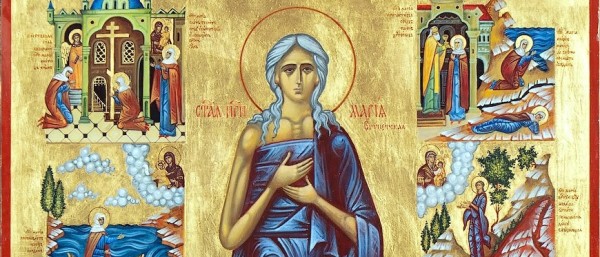


.jpg)






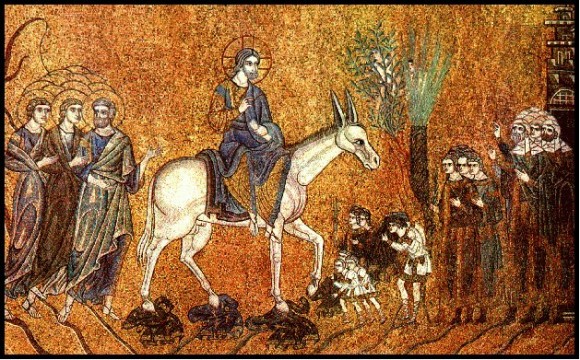
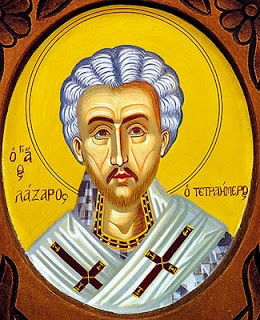

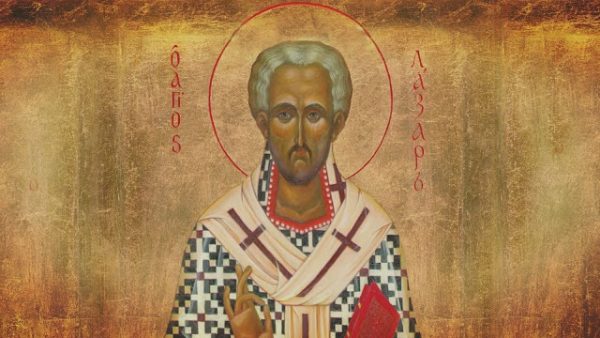










.jpg/200px-Divina_Misericordia_(Eugeniusz_Kazimirowski%2C_1934).jpg)












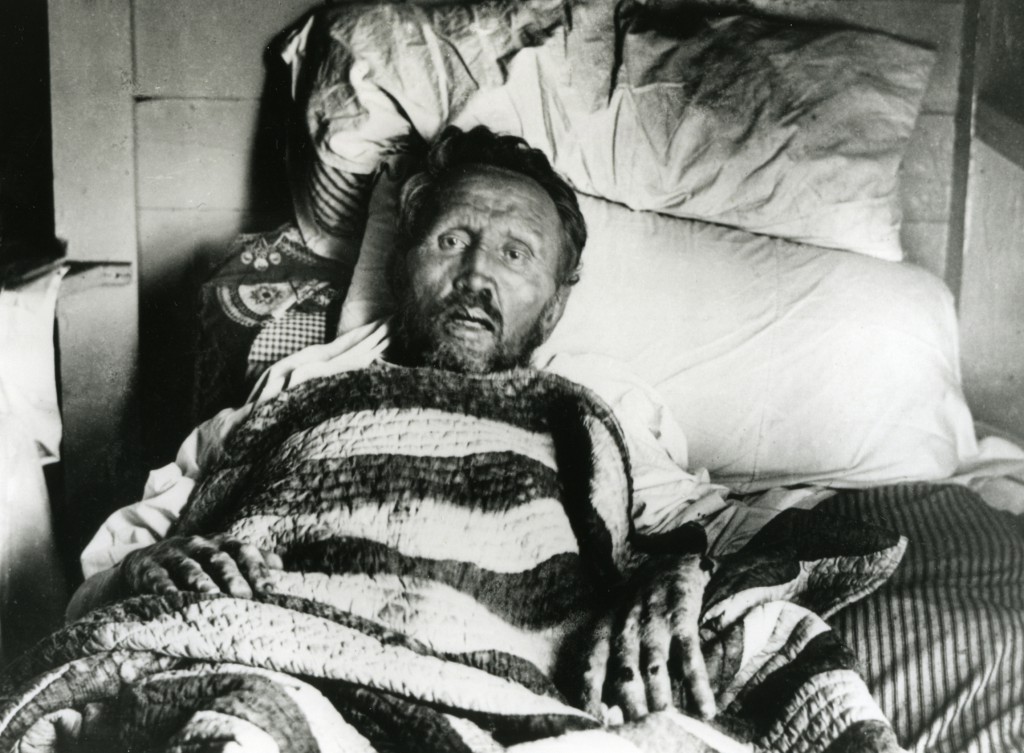



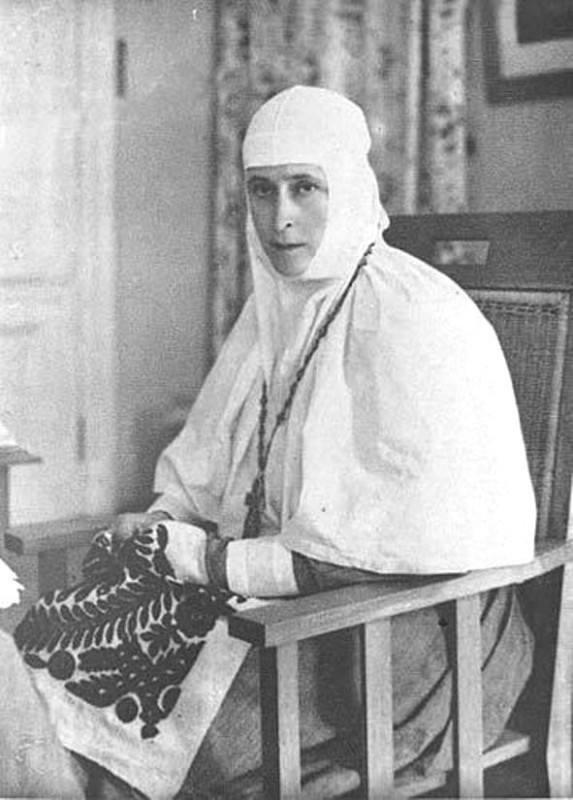







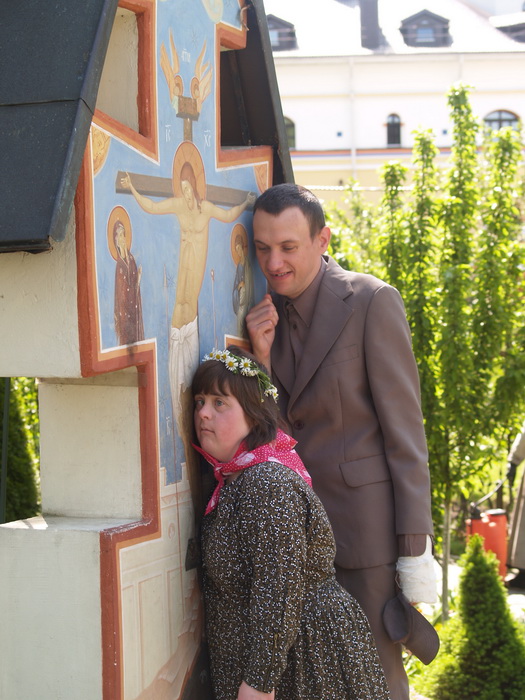



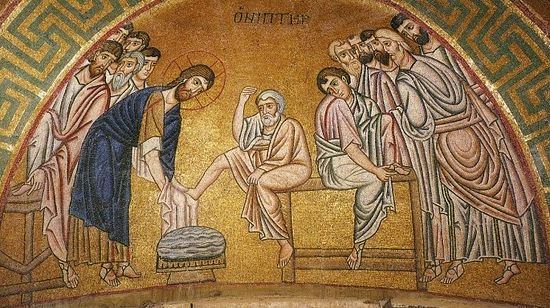

_4.jpg/220px-Benedykt_XVI_(2010-10-17)_4.jpg)



